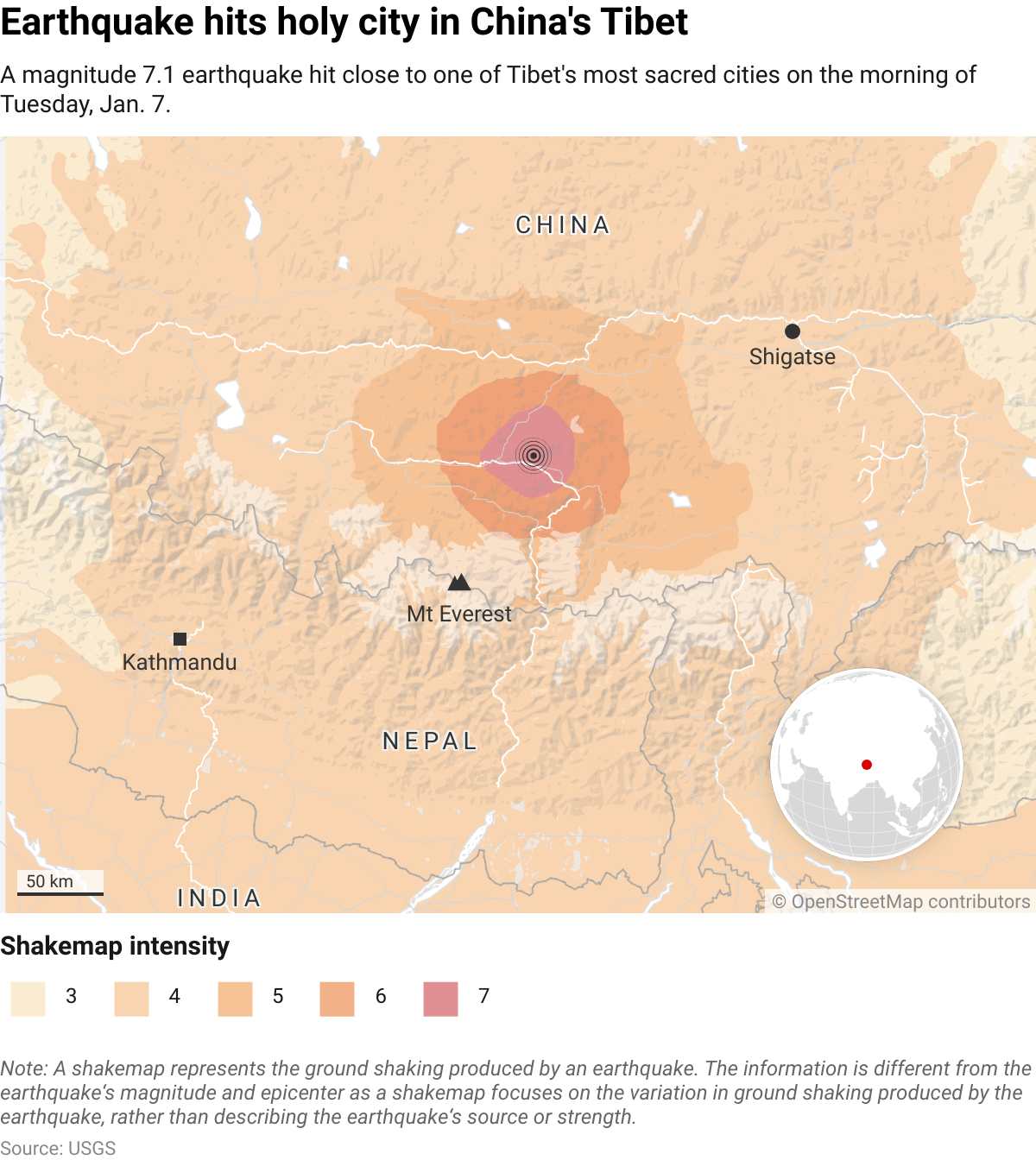7.1 Earthquake in Tibet: Location and Impact
Why in the news?
A 7.1 magnitude earthquake struck Tibet and Nepal, causing significant casualties and damage. The quake’s epicenter in the Lhasa terrane, near China’s hydroelectric project, raises concerns about regional seismic activity and environmental impacts.
Earthquake Details and Location:
- On January 7, 2025, a 1 magnitude earthquake struck Tibetan China and Nepal, with the epicenter located around 80 km north of Mt Everest in Tingry county, Shigatse region, Tibet.
- The tremors were felt as far as Kathmandu, Thimphu, and Kolkata.
- 95 people were reported dead, and 130 injured in China, with extensive damage to homes. Casualty updates from Nepal were awaited.
- The affected area, about 4-5 km above sea level, is home to approximately 800,000 people, including the spiritually significant capital of the Panchen Lama.
Geological Context and Cause of the Earthquake
- The Himalayan mountains formed about 50 million years ago due to the collision of the Indian plate and the Eurasian plate.
- The ongoing tension between these plates causes frequent earthquakes, with the Lhasa terrane having experienced over 21 earthquakes of magnitude 6 or higher since 1950.
- Geologists continue to study the plate tectonic movements to predict future seismic activity in the region.
Significance of the Location:
- The earthquake’s epicenter is located in the Lhasa terrane, a fragment of the Earth’s crust known for geological instability.
- This region is crucial for China’s construction of the world’s largest hydroelectric dam on the Yarlung Tsangpo River, which is highly significant to India as the river flows into Arunachal Pradesh and Assam, where it becomes the Brahmaputra.
- The dam’s construction has raised concerns about its impact on the river’s flow and perennial status.
- The Himalayan region holds significant amounts of water in glaciers, rivers, and lakes, and changes to these systems can affect millions of people. Earthquakes can disrupt rivers, glaciers, and lakes, increasing the risk of floods.
Sources Referred:
PIB, The Hindu, Indian Express, Hindustan Times




